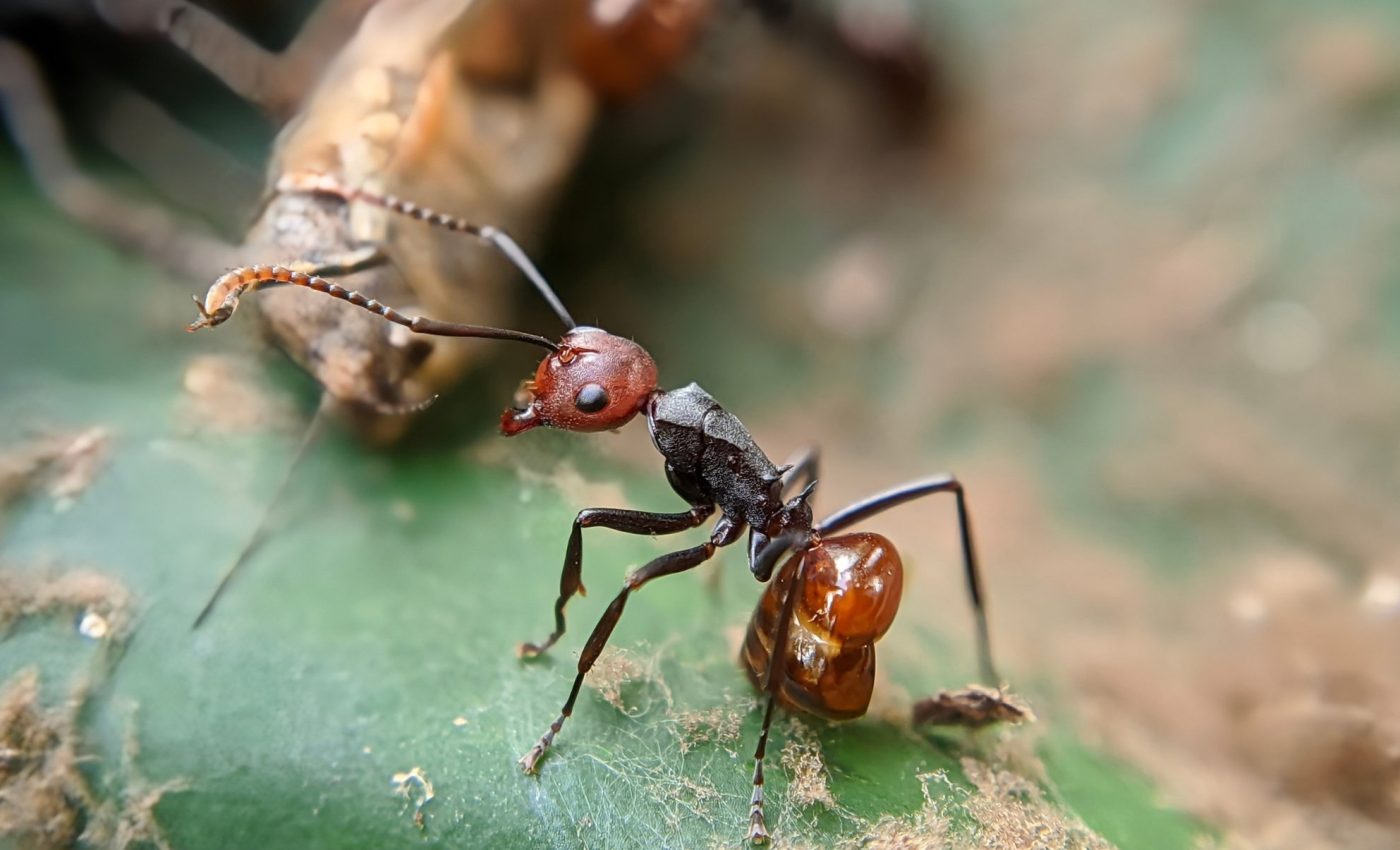
Evolutionary déjà vu: The symbiotic relationships of trees and ants
Ants are well-known for their complex social behaviors and mutualistic relationships with plants, particularly in the tropics. These interactions often involve ants inhabiting hollow swellings in trees and defending them against predators in exchange for food.
While these mutualisms have been observed for centuries, their origins remain a mystery. Recent research led by University of Utah field biologist Rodolfo Probst has shed new light on this intriguing phenomenon, specifically focusing on the ant genus Myrmelachista.
Yellow ants and understory trees
Probst’s study, published in the journal Proceedings of the Royal Society B Biological Sciences, has investigated Myrmelachista species that typically nest in dead or live stems of plants without specialized mutualistic associations.
However, one group of these species in Central America nests exclusively in live stems of specific understory trees, forming a specialized symbiosis similar to other ant-plant mutualisms.
These tiny yellow ants hollow out the stems without harming the host plants, a behavior commonly observed throughout Central America.
Convergent evolution
The researchers noted that obligatory ant–plant symbioses often appear to be single evolutionary shifts within particular ant lineages; however, convergence can be revealed once natural history observations are complemented with molecular phylogenetics.
“Here, we describe a remarkable example of convergent evolution in an ant-plant symbiotic system,” the study authors wrote.
The research revealed that this symbiosis requires complex behaviors and morphological adaptations, thought to occur infrequently in the evolutionary history of life.
The nine species exhibiting these traits were initially believed to share a single common ancestor that evolved this mutualism over a long period of time. However, Probst discovered through DNA sequence data that these species formed two distinct clusters in different parts of the evolutionary tree.
Different species develop similar traits
“Using ultraconserved element phylogenomics and ancestral state reconstructions, we show that shifts from opportunistic to obligately symbiotic evolved independently in South and Middle America,” the authors explained.
This suggests that the complex relationship evolved twice independently from non-specialist ancestors around three million years ago – a fascinating case of convergent evolution.
“I wish I could just take a time machine and see it,” Probst said. “Maybe it was the ecology or plant availability that helped those friendships evolve in the first place.”
Probst describes this phenomenon as “evolutionary déjà vu,” where different species develop similar traits due to occupying similar ecological niches.
“The coolest part of our paper is that we’re showing that these types of ant-plant friendships evolve multiple times independently. It’s like if it happens, it might happen again if you’re given the appropriate ecological conditions.”
Complex relationships of ants and trees
Probst’s co-authors include Jack Longino, a renowned entomologist known as “The Astonishing Ant Man,” and former University of Utah School of Biological Sciences postdoctoral researcher Michael Branstetter, now with the U.S. Department of Agriculture’s Pollinating Insect Research Unit. Longino highlights the significance of Probst’s findings.
“Rodolfo’s work revealed two independent evolutions of a complex relationship with plants. It suggests that the developmental building blocks for very distinctive or complex features are readily at hand, and can quickly evolve among different sets of species when the conditions arise.”
Probst, a postdoctoral researcher in the School of Biological Sciences and the university’s Science Research Initiative (SRI), has also involved undergraduates in his research, during fieldwork in Costa Rica funded by the University of Utah’s Wilkes Center for Climate Science & Policy.
The group conducted research at the San Gerardo Station in the Bosque Eterno de los Niños (Children’s Eternal Rainforest) nature reserve.
Ongoing research efforts
With ongoing assistance from SRI undergraduates, Probst currently aims to conduct whole genomic sequencing to identify the genes involved in ant-plant associations, delving deeper into a phenomenon that has fascinated naturalists for centuries.
This research not only enhances our understanding of ant-plant mutualisms but also underscores the role of convergent evolution in the development of complex ecological relationships.
By studying these intricate interactions between different species, scientists can gain new insights into the adaptive mechanisms that drive biodiversity and the intricate web of life in tropical ecosystems.
Probst’s findings highlight the importance of continued research and conservation efforts to protect these remarkable mutualistic relationships and the complex ecosystems they support.
—–
Like what you read? Subscribe to our newsletter for engaging articles, exclusive content, and the latest updates.
Check us out on EarthSnap, a free app brought to you by Eric Ralls and Earth.com.
—–













